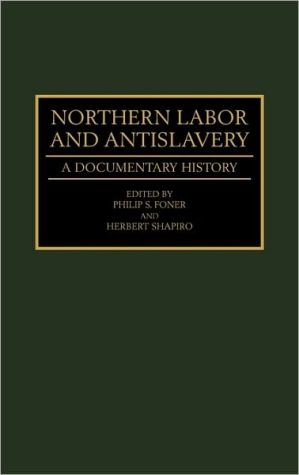

 |

|

The average rating for Northern Labor And Antislavery, Vol. 157 based on 2 reviews is 3 stars.
Review # 1 was written on 2017-06-19 00:00:00 Kanjanapol Kathong Kanjanapol KathongMy interest in this book stems from exploring the ties of Rev. George Washington Gale and Rev. Charles Grandison Finney to the founding of tbe Oneida Institute. Gale is little remembered today, but he was a pastor of the Presbyterian church in Westernville, NY, my home town. Gale was friends with the well-known evangelist Finney and invited Finney to preach in the village, perhaps the beginning of Finney's revivalist campaign that created the "burned-over district." What fascinates is why Gale was motivated to start this institute, and how this relates to his support for the abilitionist movement so fervant in central New York. Gale is thought to have been committed to training young men to go forth in the Finney style of the Second Great Awakening revivals of the 1820's and 1830's. Gale makes only brief mention of the Institute in his memoir that stops abruptly in 1834. (Gale and other notables from Oneida County moved at about this time to Illinois where they founded Knox College.) The institute was one of the "manual labor" academies that were emerging and was notable, too, for admitting blacks and whites to study together. The book focuses on Beriah Green, a radical abolitionist who became president upon Gale's departure (Gale self-initiated his departure). Green is also not well-remembered, but he was one of the most demanding and uncompromising abilitionists of the era. (It was interesting to learn of the rift between the so-called "immediatists" and the "colonizationists" and of the differing approaches to abolition, i.e. moral suasion and disengagement from politics of Garrisonian's v political activitism of Gerrit Smith and others.) The history also reminds us that even among the many who supported emancipation, there was often no sympathy for admitting blacks to the social and political privileges of whites. Green saw this discrimination as deeply wrong, perhaps making him among the most prescient thinkers of the time. As time went on, Green's bitterness over the failure of democratic institutions to address emancipation led to his forming anti-democratic views in which he advocated for governance by a "wise" theocratic leader. Green was allied for years with Gerrit Smith, but as years went on he became alienated from him. |
Review # 2 was written on 2018-06-27 00:00:00 Jamie Swartz Jamie SwartzI found this book extremely interesting. The timeline begins at the War of 1812 and continues thru the Civil War and after. It tells the story of tens of thousands of African Americans (especially runaway slaves as they fled to Canada in search of freedom, equality and a better life. this novel rediscovers the important episode in both nations' histories and provides a masterful retelling in clear and moving language. She does a masterful job of research and includes many individuals we've all heard of-Harriet Tubman and John Brown. But there are equally heroic, less familiar figures here as well, like Mary Ann Shadd, who became the first black female newspaper editor in North America and Osborne Perry Anderson, the only black survivor of the fighting at Harper's Ferry. This book helps to clarify the people, places and actions of people who made the "underground railroad" such an impactful part of our nations history. |
CAN'T FIND WHAT YOU'RE LOOKING FOR? CLICK HERE!!!